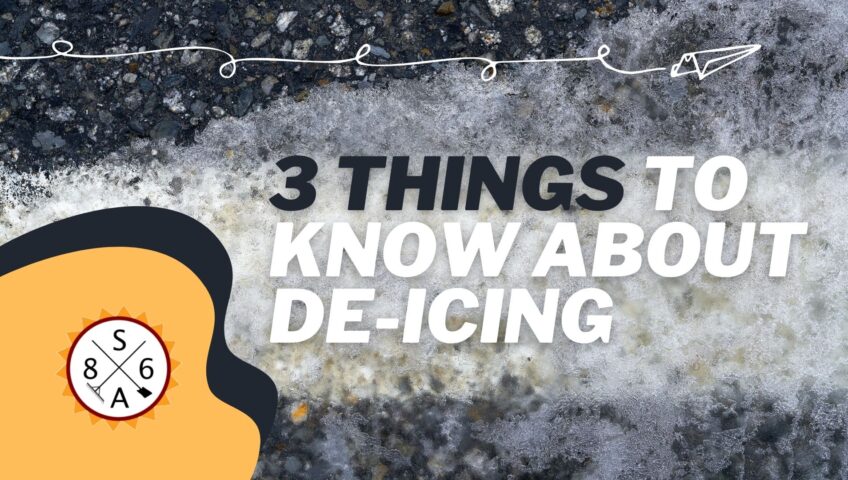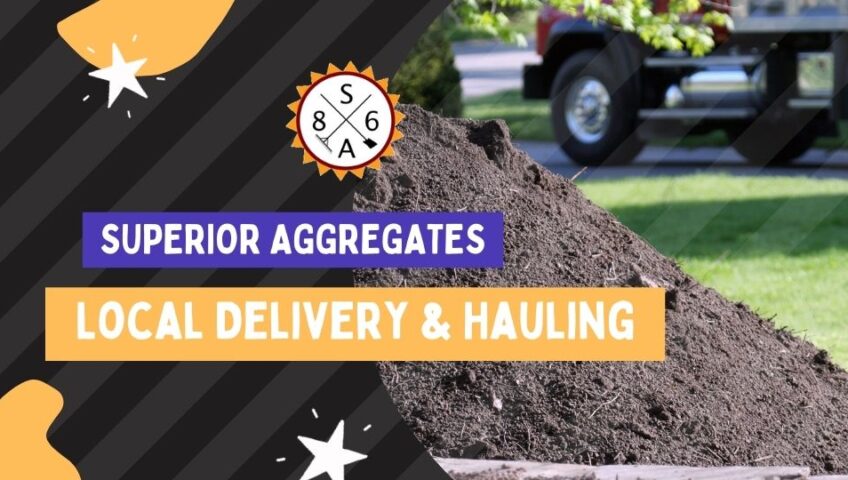
3 Things to Know About De-Icing
While snow can create the perfect scenery, icy winter asphalt opens the door for potential hazards in more ways than one. Not only can an icy driveway cause a safety risk for you and your family, but a slick walkway can open you up to liability. If someone else visiting your home were to slip and fall, you could find yourself on the undesirable end of a lawsuit.
Fortunately, you can protect your family and your guests by properly deicing your walkway and/or driveway. However, deicing involves much more than throwing salt or any ice melt all-around your driveway — this may not properly complete the task. Instead, there are several things you should know about deicing to do it properly. Continue reading to learn our top three things you should know about de-icing winter asphalt.
Get Rid of the Snow First Is the First Step to De-icing Asphalt
Even though this may seem painstakingly obvious, it’s critical you get rid of all the snow prior to starting the deicing process. Shovel as much ice and snow off of your driveway as you can. You can also try to break the ice up with a shovel to help make removal easier. If you find you can’t remove the ice through the shoveling method, lay down a deicer, which can be found at almost any hardware store. As you are choosing deicers, make sure you consider where you will be putting it. Some deicers are hazardous to pets, plants, water supplies, and masonry. This means that some deicers could require you to call an asphalt company for repairs over extended use. If you have any concerns, look for a more environmentally-friendly deicer.
Ice Evenly & Correctly When De-Icing Asphalt
If you are fortunate enough to have a handheld spreader or wheeled spreader, you can save a lot of time and effort by using it. This piece of equipment will evenly coat the ground with ice melt or salt and will take much less time than doing it by hand. However, if all you have are your hands, that will have to do — unless you have a cup, and everyone has one!
Even if you’re deicing with a cup, you should still wear gloves because most deicers are made up of chemicals. You can also use a bucket, so you don’t have to lug a big bag of ice melt or snow around. In either case, spread it evenly. If you place too much in one area, simply grab some water or a broom to spread it out. Besides, using more deicer in one area will not make the snow melt any quicker. And the more deicer you unnecessarily use, the more likely you are to cause damage to your landscape. Keep in mind that snow does not melt ice. It does, however, lower the boiling point of water. Because the majority of ice does have a thin layer of water, the salt mixture will cause a chain reaction that helps expedite melting ice— even in cold temperatures.
Sand and Gravel Can Help with Icy Winter Asphalt
Sand and gravel are also regularly used on driveways that are icy. It’s important to understand that sand and gravel will not actually melt the ice. It will provide a safer environment by increasing traction for drivers and walkers. Although this can be a very effective solution, the best way to protect your home and property is to remove the ice completely. Many people who are concerned about the environmental impact of deicers choose to combine the sand with the deicer to make a mixture. In doing so, you can reduce the impact of using deicing chemicals alone.
While snow can create the perfect scenery, icy winter asphalt opens the door for potential hazards in more ways than one. Not only can an icy driveway cause a safety risk for you and your family, but a slick walkway can open you up to liability. If someone else visiting your home were to slip and fall, you could find yourself on the undesirable end of a lawsuit.
Fortunately, you can protect your family and your guests by properly deicing your walkway and/or driveway. However, deicing involves much more than throwing salt or any ice melt all-around your driveway — this may not properly complete the task. Instead, there are several things you should know about deicing to do it properly. Continue reading to learn our top three things you should know about de-icing winter asphalt.
Get Rid of the Snow First Is the First Step to De-icing Asphalt
Even though this may seem painstakingly obvious, it’s critical you get rid of all the snow prior to starting the deicing process. Shovel as much ice and snow off of your driveway as you can. You can also try to break the ice up with a shovel to help make removal easier. If you find you can’t remove the ice through the shoveling method, lay down a deicer, which can be found at almost any hardware store. As you are choosing deicers, make sure you consider where you will be putting it. Some deicers are hazardous to pets, plants, water supplies, and masonry. This means that some deicers could require you to call an asphalt company for repairs over extended use. If you have any concerns, look for a more environmentally-friendly deicer.
Ice Evenly & Correctly When De-Icing Asphalt
If you are fortunate enough to have a handheld spreader or wheeled spreader, you can save a lot of time and effort by using it. This piece of equipment will evenly coat the ground with ice melt or salt and will take much less time than doing it by hand. However, if all you have are your hands, that will have to do — unless you have a cup, and everyone has one!
Even if you’re deicing with a cup, you should still wear gloves because most deicers are made up of chemicals. You can also use a bucket, so you don’t have to lug a big bag of ice melt or snow around. In either case, spread it evenly. If you place too much in one area, simply grab some water or a broom to spread it out. Besides, using more deicer in one area will not make the snow melt any quicker. And the more deicer you unnecessarily use, the more likely you are to cause damage to your landscape. Keep in mind that snow does not melt ice. It does, however, lower the boiling point of water. Because the majority of ice does have a thin layer of water, the salt mixture will cause a chain reaction that helps expedite melting ice— even in cold temperatures.
Sand and Gravel Can Help with Icy Winter Asphalt
Sand and gravel are also regularly used on driveways that are icy. It’s important to understand that sand and gravel will not actually melt the ice. It will provide a safer environment by increasing traction for drivers and walkers. Although this can be a very effective solution, the best way to protect your home and property is to remove the ice completely. Many people who are concerned about the environmental impact of deicers choose to combine the sand with the deicer to make a mixture. In doing so, you can reduce the impact of using deicing chemicals alone.

